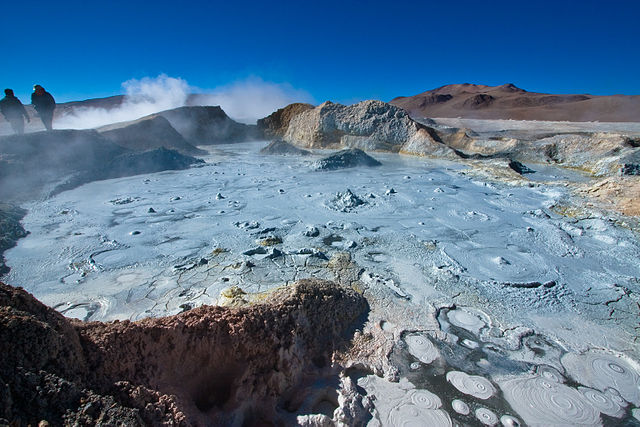Sol de Mañana is an area with geothermal manifestations in southern Bolivia, including fumaroles, hot springs and mud pools. It lies at about 4,900 metres (16,100 ft) elevation, south of Laguna Colorada and east of El Tatio geothermal field. The field is located within the Eduardo Avaroa Andean Fauna National Reserve and is an important tourism attraction on the road between Uyuni and Antofagasta. The field has been prospected as a possible geothermal power production site, with research beginning in the 1970s and after a pause recommencing in 2010. Development is ongoing as of 2023.
Sol de Mañana
Panorama of the Sol de Mañana mudpools
The landscape of Sol de Mañana
Geothermal activity is a group of natural heat transfer processes, occurring on Earth's surface, caused by the presence of excess heat in the subsurface of the affected area. Geothermal activity can manifest itself in a variety of different phenomena, including, among others, elevated surface temperatures, various forms of hydrothermal activity, and the presence of fumaroles that emit hot volcanic gases.
A fumarole in the Solfatra crater, the orange and yellow colouration is from minerals that are deposited by the superheated fumes as they cool to ambient temperature.
Geysir, a geyser in Iceland, after which the phenomenon is named.
Mud pots in the Sol de Mañana Hydrothermal field, Bolivia.
Two Hot springs in Waiotapu, New Zealand, with Artist's Palette in the foreground, and Champagne Pool directly behind it in the background.







